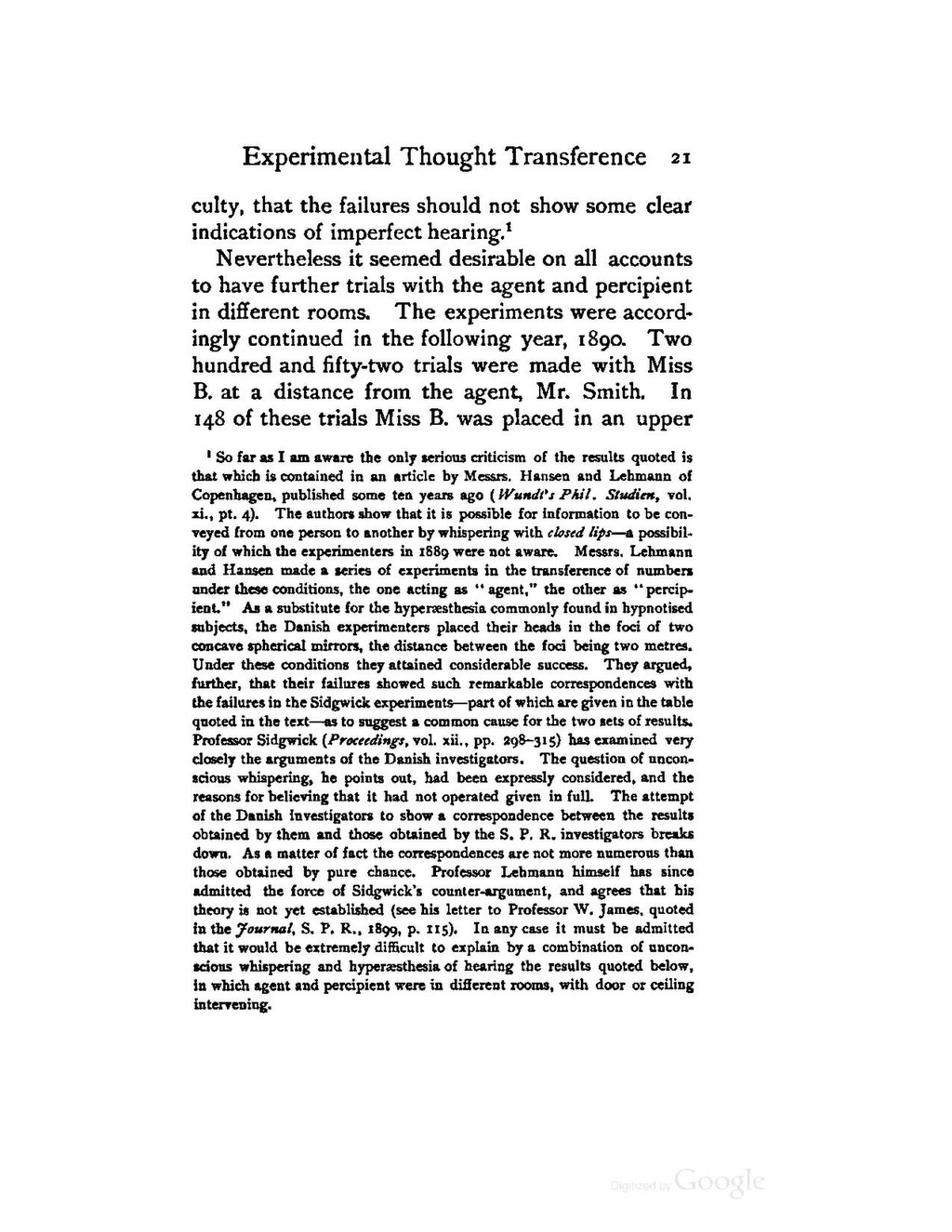Experimental Thought Transference
21
culty, that the failures should not show some clear indications of imperfect hearing.[1]
Nevertheless it seemed desirable on all accounts to have further trials with the agent and percipient in different rooms. The experiments were accordingly continued in the following year, 1890. Two hundred and fifty-two trials were made with Miss B. at a distance from the agent, Mr. Smith. In 148 of these trials Miss B. was placed in an upper
- ↑ So far as I am aware the only serious criticism of the results quoted is that which is contained in an article by Messrs. Hansen and Lehmann of Copenhagen, published some ten years ago (Wundt's Phil. Studien, vol. xi., pt. 4). The authors show that it is possible for information to be conveyed from one person to another by whispering with closed lips—a possibility of which the experimenters in 1889 were not aware. Messrs. Lehmann and Hansen made a series of experiments in the transference of numbers under these conditions, the one acting as "agent," the other as "percipient." As a substitute for the hyperaesthesia commonly found in hypnotised subjects, the Danish experimenters placed their heads in the foci of two concave spherical mirrors, the distance between the foci being two metres. Under these conditions they attained considerable success. They argued, further, that their failures showed such remarkable correspondences with the failures in the Sidgwick experiments—part of which are given in the table quoted in the text—as to suggest a common cause for the two sets of results. Professor Sidgwick (Proceedings, vol. xii., pp. 298–315) has examined very closely the arguments of the Danish investigators. The question of unconscious whispering, he points out, had been expressly considered, and the reasons for believing that it had not operated given in full. The attempt of the Danish investigators to show a correspondence between the results obtained by them and those obtained by the S. P. R. investigators breaks down. As a matter of fact the correspondences are not more numerous than those obtained by pure chance. Professor Lehmann himself has since admitted the force of Sidgwick's counter-argument, and agrees that his theory is not yet established (see his letter to Professor W. James, quoted in the Journal, S. P. R., 1899, p. 115). In any case it must be admitted that it would be extremely difficult to explain by a combination of unconscious whispering and hyperaesthesia of hearing the results quoted below, in which agent and percipient were in different rooms, with door or ceiling intervening
